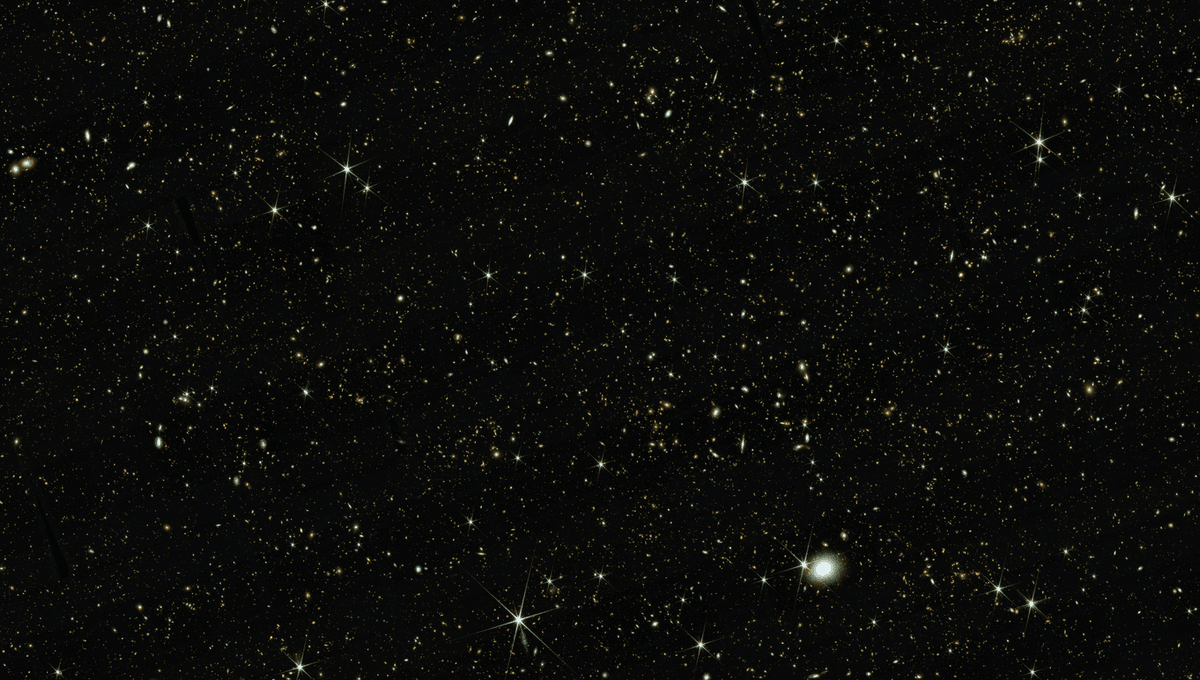
Last week, the multinational scientific collaboration COSMOS released the data behind an incredible catalog of galaxies, spanning further into the past than ever before, with a size that makes the Hubble Ultra Deep Field look like a postage stamp. This is COSMOS-Web.
When the Hubble Ultra Deep Field was released in 2004, it was the deepest look into the universe yet. Featuring 10,000 galaxies, it was a momentous observation, pushing the envelope of what we knew of the early epochs of the universe. Thanks to JWST, the COSMOS-Web composite image instead features 800,000 galaxies going deeper than ever before, reaching back into the past to 13.5 billion years ago – 98 percent of the age of the universe.
“Our goal was to construct this deep field of space on a physical scale that far exceeded anything that had been done before,” UC Santa Barbara physics professor Caitlin Casey, who co-leads the COSMOS collaboration with Jeyhan Kartaltepe of the Rochester Institute of Technology, said in a statement.
“If you had a printout of the Hubble Ultra Deep Field on a standard piece of paper, our image would be slightly larger than a 13-foot by 13-foot-wide [4×4 meters] mural, at the same depth. So it’s really strikingly large.”
The COSMOS-Web image is available to browse interactively, and it is truly exceptional. The team will need to collect more data to establish which are the earliest galaxies in the image, but already things are disagreeing with what the Hubble Ultra Deep Field had predicted. Hubble data suggested that it would take a lot longer for galaxies and supermassive black holes to form and come together.
“It makes sense – the Big Bang happens and things take time to gravitationally collapse and form, and for stars to turn on. There’s a timescale associated with that,” Casey explained. “And the big surprise is that with JWST, we see roughly 10 times more galaxies than expected at these incredible distances. We’re also seeing supermassive black holes that are not even visible with Hubble.”
The COSMOS-Web catalogue is answering many questions about the early universe as well as how matter is distributed across cosmic time. But there are also results that are puzzling based on what used to be established models.
“Since the telescope turned on we’ve been wondering, ‘Are these JWST datasets breaking the cosmological model? Because the universe was producing too much light too early; it had only about 400 million years to form something like a billion solar masses of stars. We just do not know how to make that happen,” Casey said. “So, lots of details to unpack, and lots of unanswered questions.”
The data from COSMOS-Web is now publicly available and can be access by everyone. The team hopes that sharing it freely will allow other astronomers to probe at other mysteries of the universe. Other enormous maps of the cosmos, such as from the Dark Energy Survey, are also being used for that purpose.
“A big part of this project is the democratization of science and making tools and data from the best telescopes accessible to the broader community,” Casey explained. “Because the best science is really done when everyone thinks about the same data set differently. It’s not just for one group of people to figure out the mysteries.”
Papers describing the datasets have been submitted to The Astrophysical Journal and Astronomy & Astrophysics.
Source Link: New Deepest Map Of The Universe Reaches Back 13.5 Billion Years Into The Past